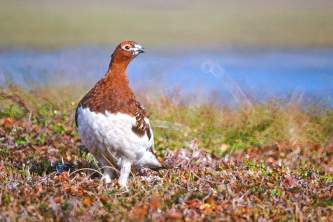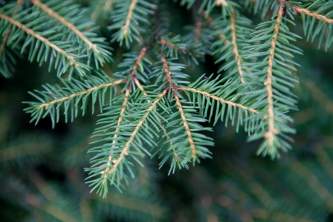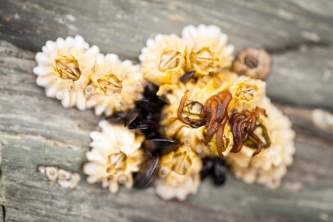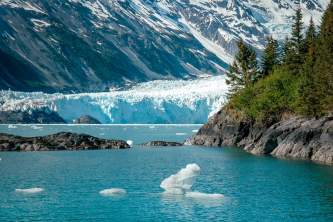Marine Ecosystem
By Elise Lockton
Alaska has nearly 34,000 miles of shoreline-more than the length of the East and West coasts of the lower 48 States combined. This region of nearly 1.5million square miles includes waters in the Chukchi Sea, Beaufort Sea, Bering Sea, Aleutian Islands and Gulf of Alaska. The productive waters support robust fisheries and are home to many unique northern animals. No trip to Alaska would be complete without some time on the water: in a kayak, on a fishing trip, a small ship cruise in the Inside Passage or exploring the fjords of Seward and Whitter.
Iron in the wind
Have you ever wondered why Alaskan waters are so rich with life? Like the beautifully shaped landscape around coastal Alaska you can blame the oceans productivity on the glaciers. As the glaciers grind the underlying bedrock they release iron rich sediment as they melt and iron rich dust gets stirred up in the wind. Soluble iron is an essential nutrient in the ocean because phytoplankton depend on it to develop. Phytoplankton, microscopic plant-like organisms are eaten by everything from zooplankton to whales. Look for suspended sediment (that gives water a grey-turquoise hue) near glacier faces, the Resurrection river in Seward, the Kenai River in Cooper Landing and you will see the sediment source of the ocean’s productivity.
Birds
Alaska's seabird population
Alaska has about 50 million seabirds that nest along the coast each summer. This is 87% of all the seabirds in the United States. Most of these seabirds are “pelagic” meaning they spend the majority of their lives on the open ocean. The only reason seabirds come to land is because they haven’t figured out how to have an egg on the water.
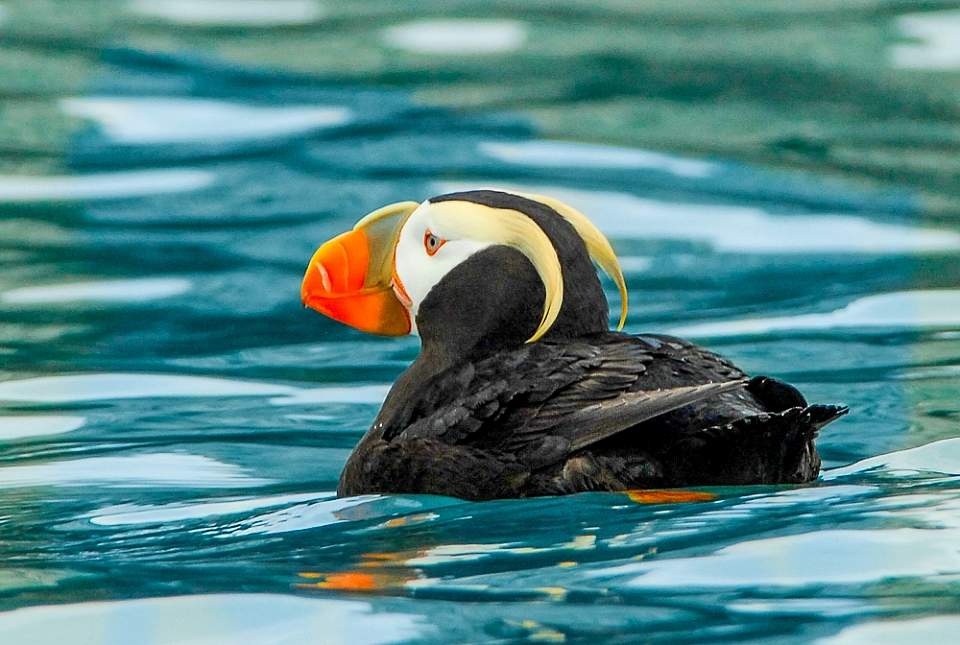
Tufted Puffin. Photo credit: Jim Williams
Clown of the sea
Some of the most iconic seabirds are the horned and tufted puffins. One of the best places to see them is spending a day exploring Kenai Fjords National Park on one of the many day boats. Puffins stand 15” tall, have large triangular shaped orange bills, black backs and white faces. Puffins use their wings to propel themselves underwater and heavy bones allow them to dive 200’ deep in search of sandlance, capelin and pollock. Because they are heavier than your average bird of that size they have to beat their wings 400 times a minute a lot to stay up in the air. See if you can identify these black and white birds by their big orange bills and fast (up to 55mph) and rapid flight pattern.
Are there penguins in Alaska?
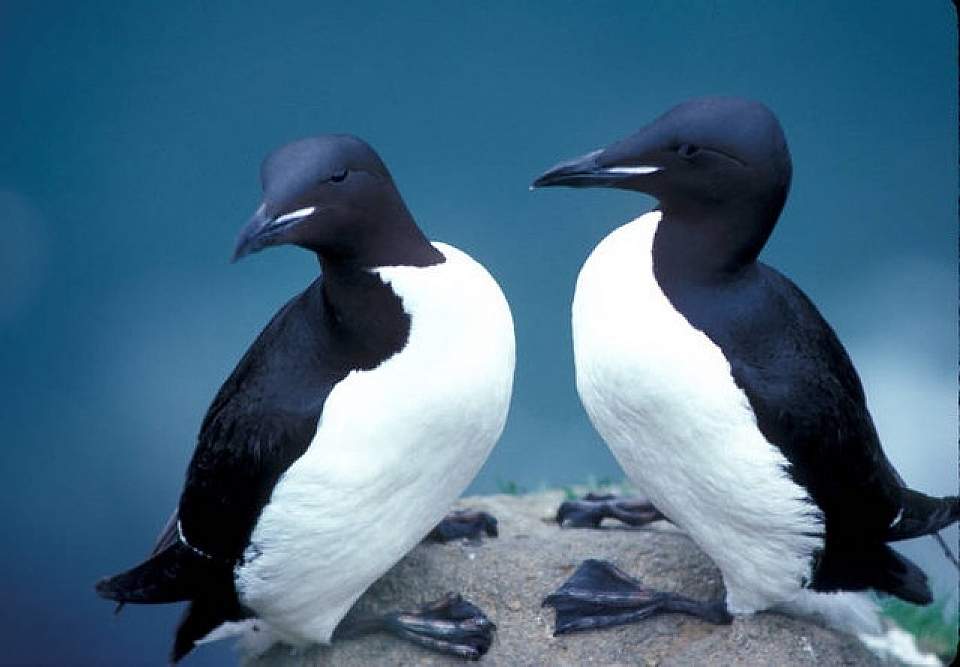
Thick-billed Murres. Photo credit: U.S. Fish and Wildlife Services Headquarters - Flickr
Other seabirds to seek out if your exploring the coast are common and thick billed murres. From a distance you might think you are looking at a penguin for their upright posture and coloring closely resemble penguins that live in the southern hemisphere. Murres are super deep diving birds that can reach depths of 600 feet in search of prey. Murres do not build a nest but rather lay a pear-shaped egg that spins around vs off the ledge they are nesting on. If you get close to a nesting colony in Resurrection Bay, Seward see if you can spot an egg on the ledge.
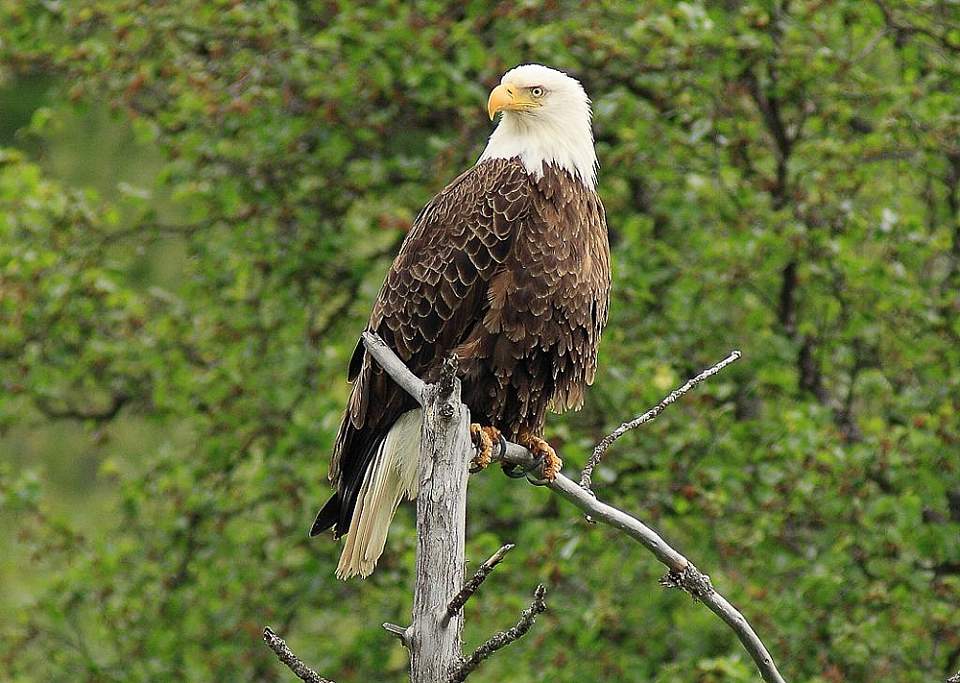
Bald Eagle. Photo credit: Eagle River Nature Center
Wait...our national bird is a scavenger?
Bald eagles became our national symbol in 1782. Had President Ben Franklin had his way the turkey would be our national bird as he thought bald eagles were a bird “of bad moral character” because they are scavengers. Bald Eagles frequently harass birds including other eagles to steal their food, and occasionally do the same to mammals such as river or sea otters. With a wing span of 6.5-8’ these big birds weigh 10-14 pounds and build big nests in order to accommodate the mated pair and their 1-3chicks. Nests on average are 5-6’ in diameter and 2-4’ tall, and are used and added to year after year. Something to look for along the coasts and around salmon streams are these huge stick nests, the largest nest in North America.
Fish
Fish On!
Alaska produces more than half the fish caught in waters off the coast of the United States and fishing is the 3rd largest employer in the state (next to oil and tourism). Throughout your travels you will most likely see some form of the activity that draws thousands of fishermen to the state each season.
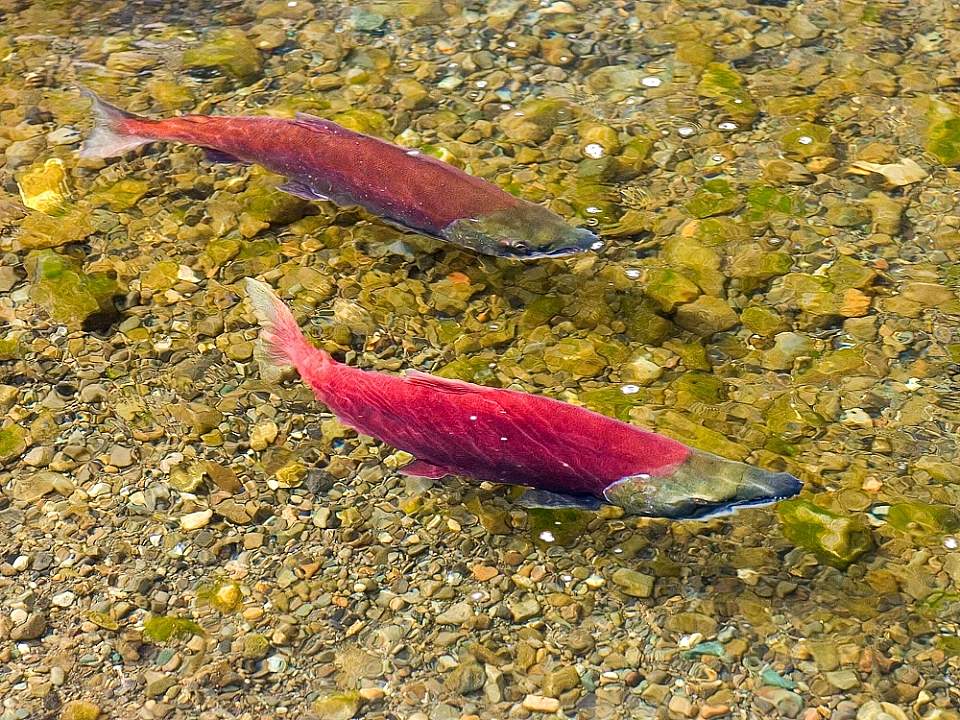
Red Salmon
Spawn till you die
There are 5 species of Pacific salmon (pink, king, chum, silver, sockeye) in Alaska. After a few years of feeding in the ocean their amazing sense of smell guides them from the ocean to the stream where they were born. The females lay thousands of eggs that the males then fertilize and then they both die. Those salmon carcasses become food for bears, eagles and a myriad of other animals. As your out exploring the coast search for signs of salmon: people fishing from boats or on a river, carcasses on the trail (hey bear) or in the river...or better yet put a line in the water and reap the reward of Alaska’s bounty.
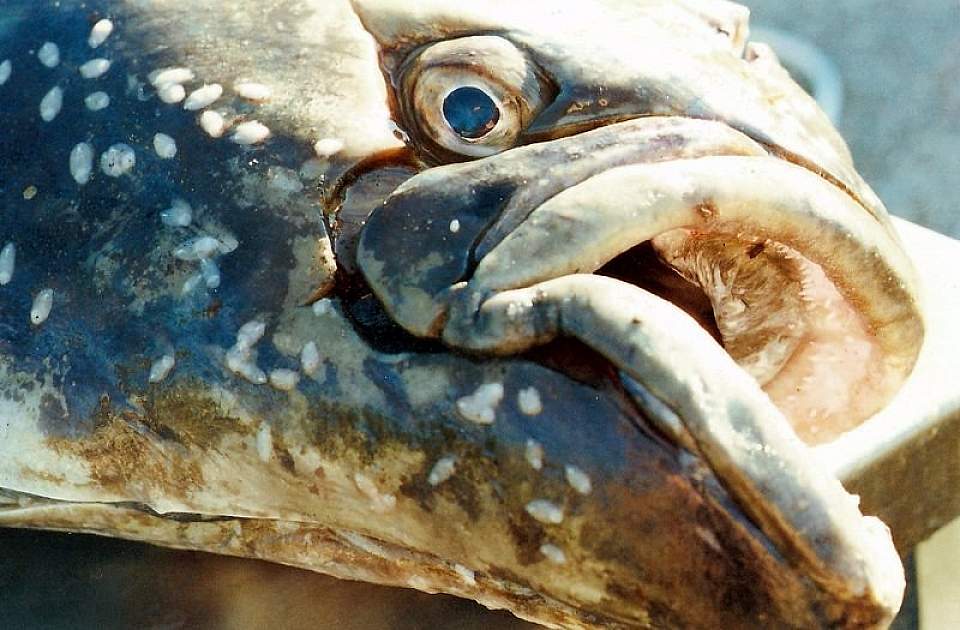
Halibut. Photo credit: Isaac Wedin - Flickr
For the halibut
Pacific halibut is the largest species of flatfish. They can grow to ginormous sizes, up to 8 feetlong and 500 pounds. When they are born they swim like salmon, with eyes on either side of their head. As they grow the left eye migrates to the right side of the head and the halibut begin swimming sideways, with both eyes on the top of their bodies. By the age of 6 months, young halibut become bottom fish, settling to the bottom in shallow nearshore areas. Halibut move seasonally. Mature fish move to deeper off shore areas in the fall to spawn, and return to near shore feeding areas in early summer. Go check out the local docks in Seward, Whittier or Valdez at the end of the day and see if you can see one of these behemoth fish hanging on the hook.
Mammals
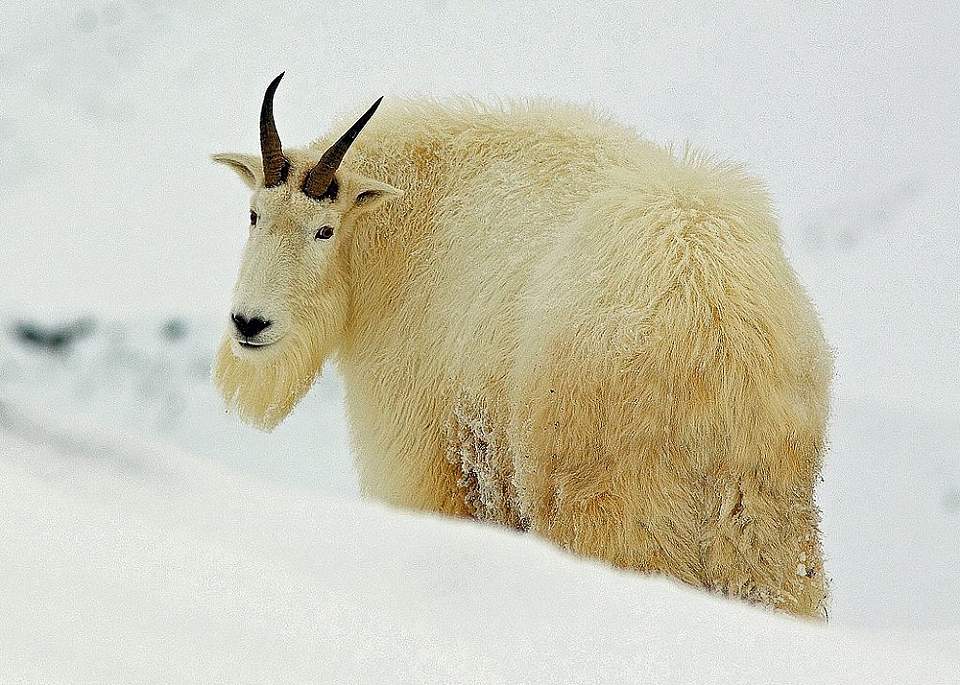
Mountain Goat. Photo credit: Eagle River Nature Center
Mountain Goats
Mountain goats have the ability to hang on cliffs by their toes. Their hooves consist of two toes that can move independently from each other, allowing for incredible agility on steep terrain. The rocky slopes they call home are too steep for bears, wolves, wolverines to navigate and act as a form of defense. Scan wide and high and see if you can spot a goat in your travels or better yet a nannie and a kid.
The old man and the sea
Sea Otters have to be one of the cutest animals in the sea. They are the smallest species of marine mammal and they are unique in that they have no blubber. What they lack in blubber they make up for in fur and their coat consists of 600,000-1,000,000 hairs per square inch!! They have high metabolism that helps to keep them warm and eat 25% of their weight every day. For a 100-pound sea otter that’s 25 pounds of clams, crabs, mussels, etc. Keep your eyes open for these furry weasels particularly around their favorite habitat, kelp beds. One of the largest concentrations of sea otters can be seen from a small ship cruise in Glacier Bay National Park or right outside the Seward Harbor.
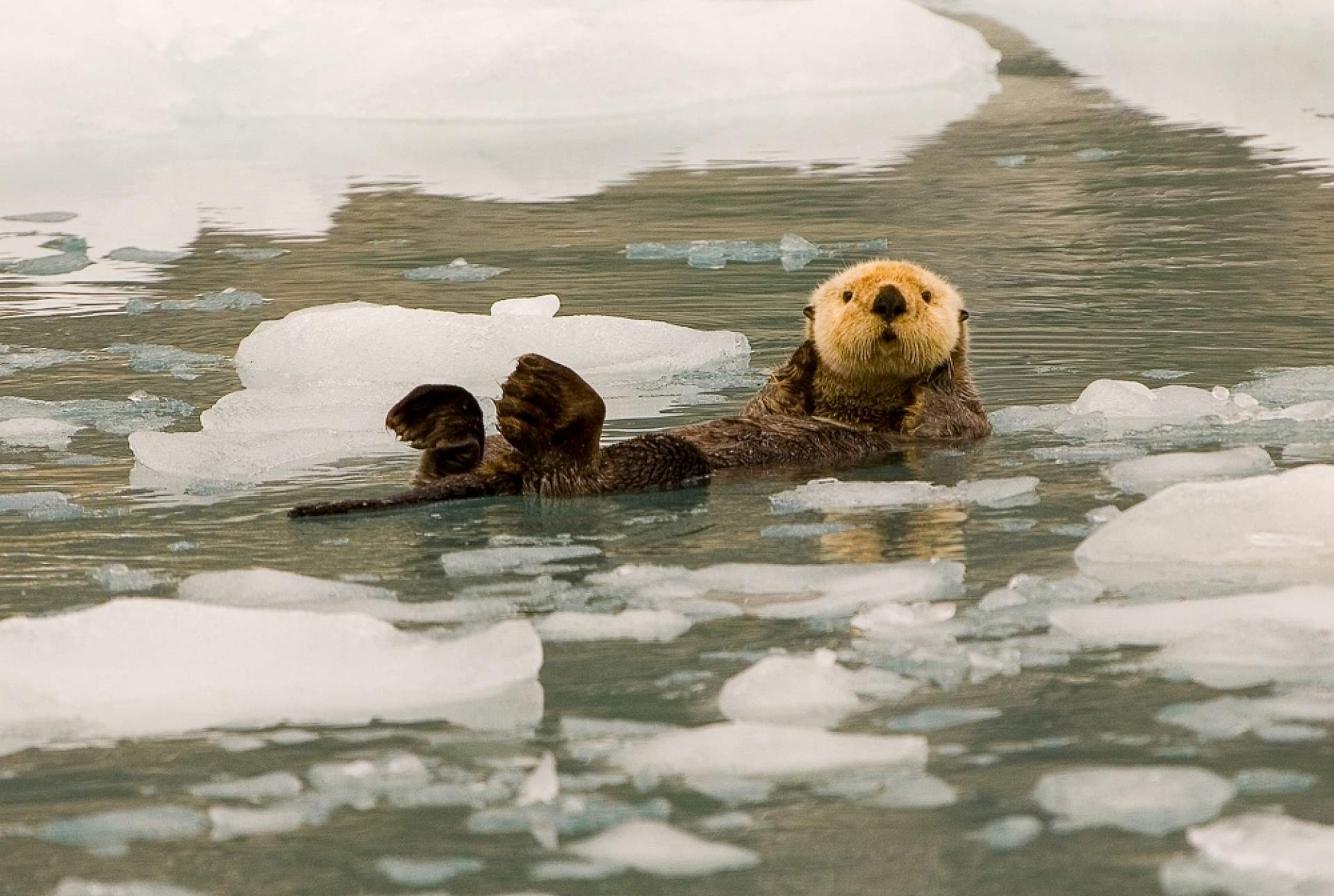
Sea Otter
Beach Master
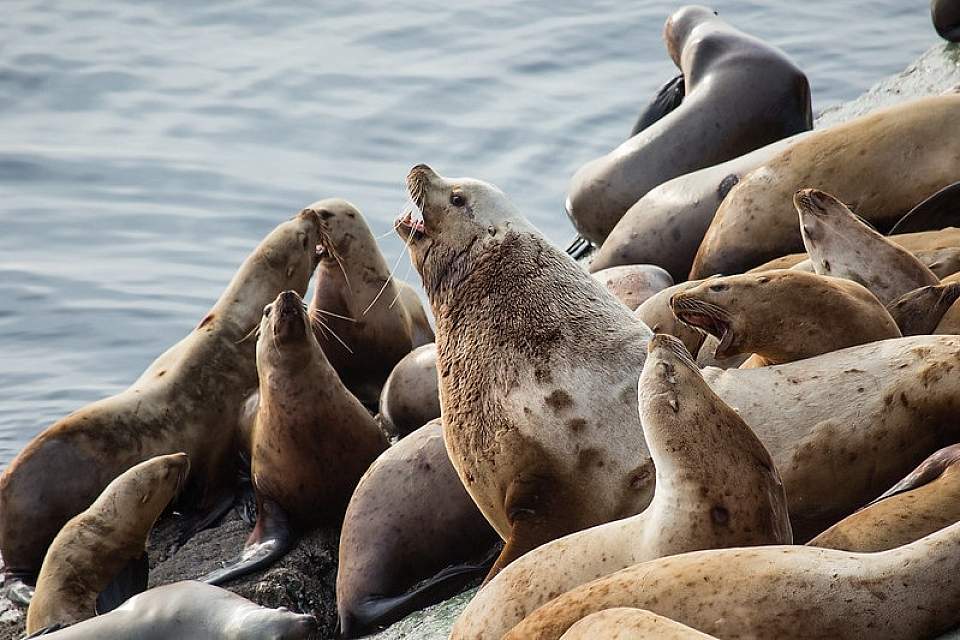
Sea Lions. Cale Green - Flickr
Do you know what the largest species of sea lion is? Steller sea lions are the largest species of “eared seal” and the big male beach masters can weigh up to 2400 pounds! Can you imagine having to feed a body of that proportion? They eat 6% of their weight every day and that equates to 150 pounds of sand lance, herring, capelin, cod, etc. You can often hear the call of the lion on approach to their haul out on No Name Island or the Chiswell Islands out of Seward. As you get close see if you can pick out the larger males with their thick neck and broad chests.
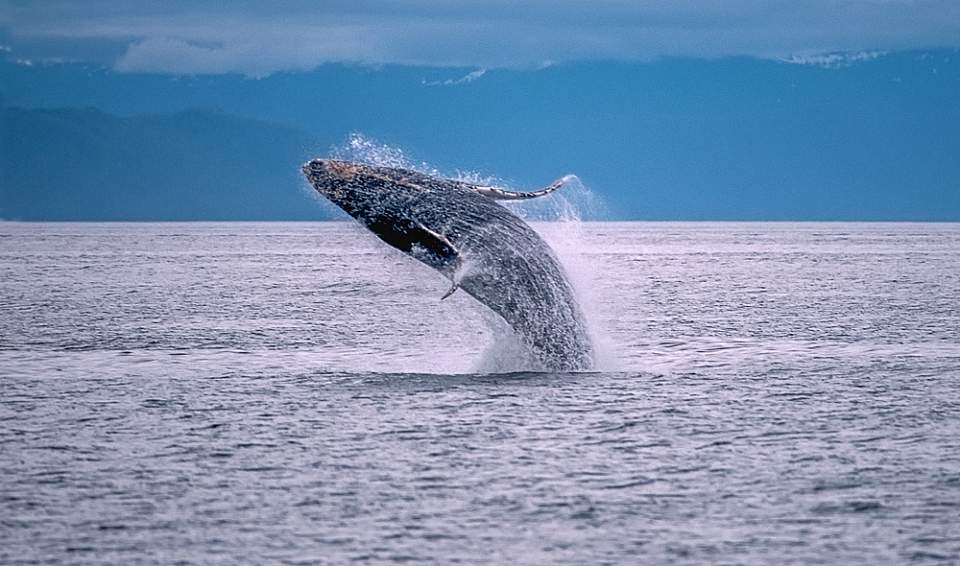
Humpback Whale
Whale Ho!
The humpback whale averages about 40’ and weigh about 1 ton per foot. Can you imagine how much food it requires to sustain 80,000 pounds? Every time humpbacks open their mouth they can distend their throat pleats (like an accordion) and take in 16,000 gallons of water. Using their 2 ton tongue they force the water across baleen plates which hang from their upper jaw bones. Those keratin plates act as a sieve and strain their prey. For such a large animal they can’t swallow anything bigger than a grapefruit, that means they eat a lot of schooling fish: capelin, sand lance, herring and krill. One of the best places to look for tail flukes, blows and breaches is from a small ship cruise in the Inside Passage.
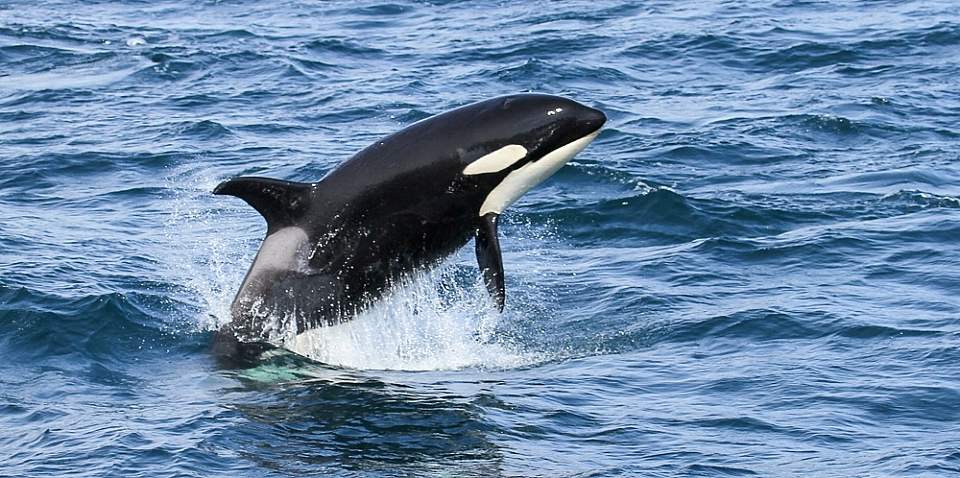
Orca
Orcas “Demon from hell”
The scientific name of Orcas translates into the “demon from hell”. They are the largest member of the dolphin family and at 23-26’ and 4-8 tons are much smaller than humpbacks. There are three forms of orcas that have different niches. The transient orcas eat marine mammals, residents eat fish and offshores have been documented eating sleeper sharks. Socially they are fascinating as their matrilineal structure means that a female (matriarch), her sons and daughters, and her daughters’ offspring will all stay together for life. When you are out on Resurrection Bay look for the 6’ fin of the males and hopefully that will lead you to an encounter with the larger group.

